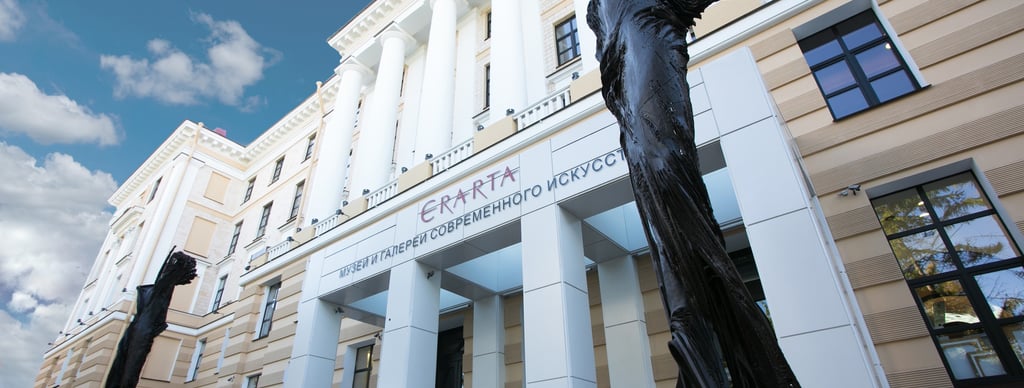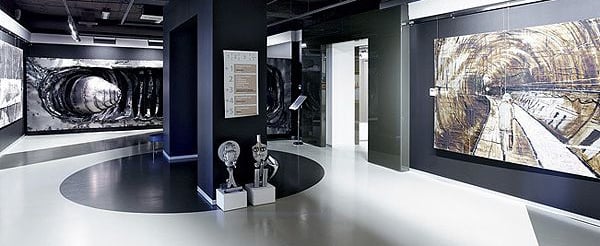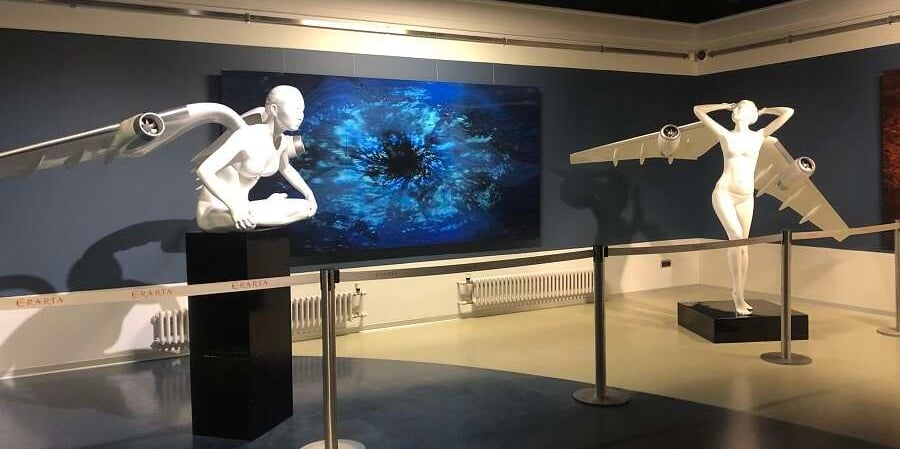Erarta Museum of Contemporary Art: The Pulse of Modern Russia in Canvas and Light
Erarta Museum of Contemporary Art — a living organism of creativity, a bold experiment, a place where the past surrenders to the future.


The Vision of Erarta
Founded in 2010, the Erarta Museum is the largest private museum of contemporary art in Russia, and one of the most dynamic cultural institutions in Europe.
Its name derives from a fusion of two words: era and arta — symbolizing a new age of art.
In a country where much of the museum world remains centered on imperial collections and Soviet memory, Erarta was born from a radical vision: to create a space dedicated entirely to living Russian artists, free from the constraints of state ideology or commercial pressure.
Its mission is twofold:
To support and showcase Russian contemporary art on a global stage.
To engage and inspire a broad public — not only the art world elite, but everyday citizens, travelers, and the curious.
In this, Erarta is more than a museum. It is a movement.
A Space Reimagined
Erarta inhabits a striking 1930s Constructivist building on 29th Line of Vasilyevsky Island — once a Soviet factory research institute, now transformed into a vibrant five-story museum complex.
Its architecture reflects its ethos: solid, functional, open to transformation.
The renovation preserved the building’s stark, honest forms while introducing light-filled galleries, sleek staircases, and multimedia spaces. The result is a space that feels modern yet grounded, a canvas for the art it contains.
Visitors enter through a soaring atrium crowned with an iconic red “E” — Erarta’s logo — and from there embark on a journey through thousands of square meters of galleries, installations, and experiences.
The Collection: A Living Mirror of Russian Creativity
Erarta’s core collection numbers over 2,800 works by more than 300 contemporary Russian artists — painters, sculptors, photographers, installation artists, digital creators.
Unlike the state’s grand narratives or the market-driven Western scene, Erarta’s artists reflect the complex, contradictory, and deeply human face of modern Russia.
Here, one finds:
Brutal beauty and raw social commentary.
Tender lyricism and ironic humor.
Personal confession and political critique.
Mythic imagination and minimalist abstraction.
Erarta’s collection spans a wide spectrum of styles and media, reflecting the vast diversity of Russia’s regions and creative voices.
Painting
Painting remains the heart of Russian visual culture, and Erarta honors this tradition while pushing its boundaries.
The museum champions figurative and narrative art, giving space to works that tell stories — of life in provincial towns, of fractured urban dreams, of ancient folklore refracted through modern eyes.
Artists such as:
Dmitry Shorin: ethereal images of flight, youth, and memory.
Ekaterina Zernova: luminous still lifes and urban landscapes.
Alexander Dashevsky: monumental industrial fantasies rendered in oil.
Valery Lukka: haunting visions of Soviet ruins and personal nostalgia.
Sculpture and Installation
Erarta’s galleries also house an evolving collection of sculpture and installation art, from the intimate to the monumental.
Visitors encounter:
Kinetic sculptures that respond to movement and light.
Assemblages of found objects reimagined as poetic statements.
Immersive environments where sound, space, and texture envelop the viewer.
Photography and New Media
Photography occupies a vital place in Erarta’s vision. The museum champions both documentary photography — capturing the textures of contemporary Russian life — and conceptual works that interrogate the image itself.
Digital art, video installations, and virtual reality experiences further expand Erarta’s mission to engage the technologies of today and tomorrow.
U-Space Projects: Art as Experience
One of Erarta’s most distinctive innovations is its series of U-Spaces — immersive, interactive art environments designed to evoke specific emotional states or experiences.
These short-duration installations — each visited in small groups — invite the audience to enter the artwork, to feel and reflect rather than simply observe.
Examples include:
A room that simulates the journey of the soul through darkness and light.
A domestic space filled with sound and memory — evoking childhood, loss, and hope.
An abstract environment where light patterns respond to breath and movement.
The U-Spaces embody Erarta’s belief that art should not merely be viewed — it should be lived.
Practical Information
Location
Erarta Museum of Contemporary Art
29th Line of Vasilyevsky Island, 2, Saint Petersburg, Russia
Opening Hours
Daily: 10:00 – 22:00
Closed on Tuesdays.
Tickets
Tickets can be purchased online or at the museum entrance.
Special discounts available for students, seniors, and children.
Separate admission applies for U-Spaces, which require advance booking.
Public Transport
Metro: Vasileostrovskaya or Primorskaya stations, followed by a short bus or tram ride.
Taxi services are also convenient.
Accessibility
Fully wheelchair accessible.
Special programs available for visitors with disabilities.
Visitor Services
Erarta Café: serving contemporary Russian cuisine and international dishes.
Museum shop: offering art books, prints, and design objects.
Library and reading room.
Guided tours in Russian and English.
Regular concerts, film screenings, and performance events.
For tickets, current exhibitions, virtual tours, and artist profiles:
https://www.erarta.com


Exhibitions: The Pulse of the Present
In addition to its permanent collection, Erarta is renowned for its dynamic program of temporary exhibitions — over 40 shows each year — making it one of the most active museums in Russia.
These exhibitions feature both emerging and established Russian artists, as well as selected international creators whose work resonates with Erarta’s vision of art as a deeply human, emotionally engaging force.
Past exhibitions have included:
“Russian Street Art: From Vandalism to Masterpieces” — a groundbreaking survey of urban creativity.
“Mechanical Heart” — kinetic sculptures blending engineering and poetry.
“Contemporary Russian Photography” — revealing the faces and landscapes of modern Russia.
Solo retrospectives of rising stars in painting, installation, and digital art.
Through these ever-changing exhibitions, Erarta ensures that each visit offers something new, a fresh dialogue between artist and viewer.
Education and Community
Erarta is also a center of learning and cultural exchange.
Its educational mission includes:
Guided tours for visitors of all ages and backgrounds.
Lectures and artist talks exploring the ideas behind the works.
Workshops and masterclasses in painting, sculpture, photography, and digital media.
Film screenings and musical performances that bridge art forms.
A key part of Erarta’s vision is to demystify contemporary art — to show that it belongs not only to specialists, but to everyone. Its programs encourage engagement, dialogue, and curiosity.
Global Reach and Recognition
Though rooted in Saint Petersburg, Erarta has an explicitly international mission.
Its traveling exhibitions have appeared in:
London
Zurich
New York
Venice
Shanghai
Through such partnerships, Erarta brings Russian contemporary art to the world stage, challenging stereotypes and showcasing the depth and diversity of its creators.
At the same time, the museum welcomes international artists to exhibit in Saint Petersburg, fostering cross-cultural dialogue.
The Erarta Experience
Visiting Erarta is an experience unlike any other museum in Russia.
Here, one encounters:
An atmosphere of openness and exploration — far from the hierarchies of state museums.
Friendly, knowledgeable staff who encourage questions and dialogue.
Carefully designed spaces that respect both the artwork and the visitor’s experience.
A commitment to emotional resonance — Erarta’s motto is:
"If a person leaves the museum feeling nothing, the museum has failed."
This ethos permeates every corner of Erarta, from its bold curatorial choices to its welcoming café and bookstore — all designed to make art accessible, inspiring, and alive.




